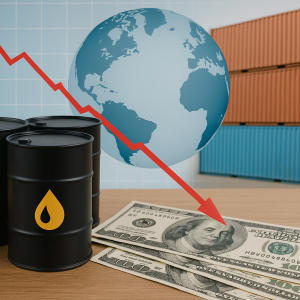News
Share on
According to the Spring forecast report 'Rates, PNRR, superbonus, energy: what will happen to Italian growth', drawn up by the Centro Studi Confindustria, the Italian growth surprised on the upside in 2023, coming in at +0.9% per year despite high rates and inflation. Decelerating from the very high rates of 2021-2022, which incorporated the post-pandemic recovery, but much better than Italy's modest pre-pandemic rates. 2023 growth is twice as high as the Eurozone average. It should be noted, however, that if there had not been an extraordinary decumulation of stocks (-1.3 the contribution to the GDP), Italian GDP growth would have reached +2.2%. Italian GDP in 2024 is expected to grow in line with the dynamics observed in 2023: in the base scenario, the CSC forecasts an annual increase of +0,9%, which is 0.4 percentage points higher than in last October's scenario. Growth in 2025 is expected to be slightly higher, at +1,1%.
In the two-year forecast period 2024-2025, in addition to an improvement in global demand that will give new impetus to exportstwo factors will still be able to sustain Italian growth at a significant pace.
The first is the interest rate cut by the ECB.
In the latest official communiqués, it has become clear that the ECB is no longer thinking about further hikes and sees the beginning of a phase of cuts.
The forecast scenario follows these indications: the first cut in June will be followed by three more by the end of the year, assumed to be a quarter of a point each, reaching 3.50%, one point lower than today; three more cuts will follow in 2025, up to 2.75%. At these levels, the policy monetary policy will continue to be (slightly) restrictive at the end of the forecast horizon, to a much lesser extent than today. This may give more impetus to investment and also to consumption.
Compared to this scenario, the risk of a rate hike instead can be considered minimal. While it cannot be ruled out that a greater persistence of European inflation above the +2.0% threshold might induce the ECB to postpone the rate cut even further, all the more so if the Fed decides to wait longer. For the Italian economy this would act in an unfavourable directionbecause it would prolong the monetary tightening, which is already excessive in light of Italy's inflation, which has fallen well below +2% since October 2023.
The second driver by growth in the two-year forecast period is the implementation of the NRP which is coming into its own: in 2024 and 2025, in fact, the amount of Plan resources to be spent on investments and reforms is EUR 42 and 58 billion respectively, i.e. more than 2 GDP points per year, 100 billion over the two-year period. Although it is difficult to make precise assumptions on the overall impact that the resources of the NRP, recently remodelled by the government, will have on the growth of the economy, because there is a lack of information on various aspects of the remodulation, the boost to GDP of a full implementation of the Plan will in any case be very strong, decisive for keeping Italian growth high.
Various factors restrain growth. In contrast to these two powerful growth stimuli, there are various factors that will tend to dampen Italian GDP in the two-year period. The effect
net is still expected to be positive. But clearly this also means that there would be room in 2024-2025 for even stronger economic growth than can be expected today.
First brake, the cost of electricity paid by companies remains higher in Italy compared to the main EU countries and also compared to other major international competitors such as the USA and Japan. This creates a competitive disadvantage for Italian companies: an electricity market reform and a higher share of renewables in electricity generation, as they are now cheaper than fossil fuels, could mitigate Italy's energy costs and reduce (though not eliminate) foreign dependence.
Second brake, the gradual phase out of the Superbonus, already expiring at the end of 2023 in terms of the rate at 110%, and of the other building incentives. Residential construction, in terms of value added and thus contribution to GDP, is expected to be strongly affected by this planned reduction in incentives, already in 2024 and to an even greater extent in 2025. Manufacturing should not be affected much. It is clear that part of the GDP growth in the past years is attributable to the impacts of the Superbonus, 2.4 percentage points in 4 years.
Thirdglobal bottlenecks in transport and their negative impact on Italian industry. The issue of transport security does not only concern the Red Sea, a crucial hub for the exchange of goods between Europe and Asia, but also numerous other fragilities along international transport routes, for example in the Strait of Malacca (in Asia) and the Panama Canal (in America). In Italy, more than half of the incoming goods volumes arrive by sea and ships carry 42% of the exported quantities. There are also several critical issues in regional transport routes, which are mostly overland: for Italy in particular along the Alpine arc, for connections with other
EU countries. About the crisis in the Red Sea, in particular, the impact of recent increases in maritime transport costs, which have more than doubled, on Italian industry's producer prices is estimated to be moderate overall, but is strong in specific sectors such as chemicals, metallurgy and paper.
Going into the different chapters of the forecasts, it can be seen that the fixed investments are expected to grow modestly+1.0% on average in 2024 and +0.7% in 2025, a much reduced pace compared to last year (+4.7% in 2023) and even more so compared to the two-year post-pandemic period (+20.3% in 2021 and +8.6% in 2022), which represented a unicum compared to other major European countries. In 2024-2025, however,
several factors will act to support the investment dynamic: public investment will continue to grow at a high rate thanks to the implementation of the NRP projects; spending on non-residential buildings should also grow; spending on plant and machinery, above all, will be driven by the cut in interest rates; and also by the fact that companies, after the current waiting period, will be able to use the new incentive programmes (Transition 5.0)
In the forecasting scenario, Italian exports of goods and services, after the near stagnation in 2023 in which they nevertheless grew more than world trade, will return to growth in the two-year period at a stronger pace (+2.2% and +2.5%), slightly above world trade, although still lower than in 2021 and 2022.
Employmentmeasured in terms of full-time equivalent units (FTEUs), will advance over the forecast horizon at a pace slightly below that of GDP: +0.7% in 2024 and +1.0% in 2025. The recent good performance of employment has allowed the unemployment rate to fall back to 7.4% in early 2024 from its peak of 10.2% in spring 2021. This rate is expected to fall in 2025 to 7.1%, thanks to a further increase in employment and a labour force that will continue to advance but at a moderate pace. It should be noted that a recomposition of the labour force is underway in which industry is losing workers to services; employees have been growing since 2015 while the number of self-employed persons has been declining, but still remains above the European average. The employment rate of young people has also risen sharply in recent years, but a strong contribution comes from a shrinking population, rather than from the increased employment of young people.
The adjustment of public accounts. The estimate of the public deficit in 2023 has recently been strongly revised upwards by Istat, to 7.2% of GDP from 5.3% projected in last September's NaDEF. The revision is linked to changes in the accounting treatment of the resources mobilised by the Superbonus and Transition 4.0. In the forecast scenario, the return of the deficit will be substantial in 2024, reaching 4.4% of GDP, slower in 2025, at 3.9%. This is due to positive revenue dynamics and the gradual phasing out of construction incentives.
The Italian public debt is estimated to rise to 139.1% of GDP in 2024, i.e. +1.8 GDP points higher than in 2023, and in 2025 it is expected to continue to rise by another 2.0 points, to 141.1. This is due to two factors: the difference between the average cost of debt and nominal growth becomes positive again; there is an unfavourable accounting reclassification effect related, as mentioned, to some tax breaks (Superbonus and Transition 4.0).
On public accounts, the rules of the Stability and Growth Pact whichlargely modified and mostly for the betterwill require Italy and several other EU countries to take action to improve their deficits and debts in order to bring them back towards the set parameters, which, in short, require debt to be stably and significantly below 31T5T.
In a global scenarioIn the two-year forecast period, the economy will remain on an expansion path, albeit at a moderate pace. Growth will be supported by the emerging economies, which will accelerate slightly, by the US economy, which has not been affected by the high rates, but is expected to slow down gradually, also due to the increased uncertainty related to the presidential elections, and only in 2025 by a better dynamic in the Eurozone, which will still remain on the 2023 pace this year. There are, however, significant downside risksconcerning an increase in geopolitical tensionsan escalation of ongoing military conflicts and further disruptions in global chains of supply, especially in international transport. In the positive, On the other hand, a possible maintenance of the robust growth pace in the United States and a faster rebound of the European economy, starting with the German economy, could be surprising, especially in the case of a faster-than-expected rate cut.
Attachments

















